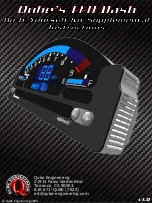
4.
Initiate signal generation.
5.
Disable the RF output.
6.
Check the signal generation status and verify that there are no reported errors or
warnings.
7.
Configure the signal source analyzer using the following settings:
•
Center frequency: 100 MHz
•
Reference level: 10 dBm
•
Frequency span: 250 kHz
•
Reference Clock source: External
•
Frequency counter resolution: 0.1 Hz
•
Sweep: Manual
•
Number of sweeps: 1
•
Auto Sweep Time
8.
Use the signal source analyzer frequency counter to measure the frequency of the peak at
approximately 100 MHz.
9.
Calculate the deviation using the following formula:
Δf =
fMeasured MHz − 100 MHz
100 MHz
ppm
10. Ensure that the deviation found in the previous step is less than the result of the following
equation:
As Left Calculation:
Initial Accuracy
+
Temperature Stability
As Found Calculation:
Initial Accuracy
+
Aging
+
Temperature Stability
where
Initial Accuracy
= ±0.1 ppm
Temperature Stability
(15 °C to 35 °C) = ±0.2 ppm
Ten year aging = 1.25 ppm
11. Close the device session.
Verifying 100 MHz Reference Amplitude Accuracy
This procedure verifies that the internal 100 MHz reference circuitry is adjusted for correct
amplitude accuracy.
1.
Connect the power sensor to the PXIe-5654 REF OUT 2 100 MHz front panel connector
as shown in the following figure.
PXIe-5654 Calibration Procedure
|
© National Instruments
|
13














































